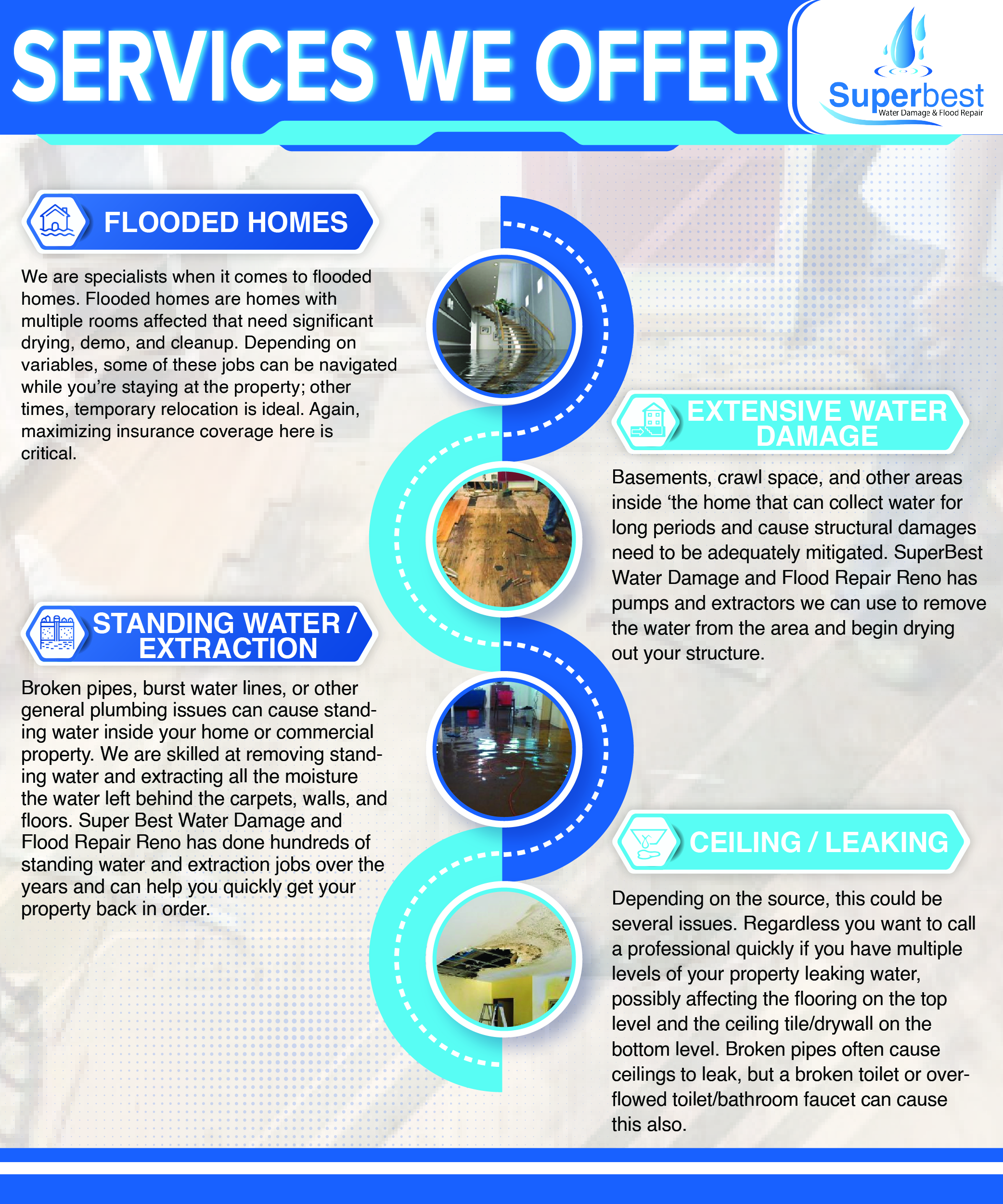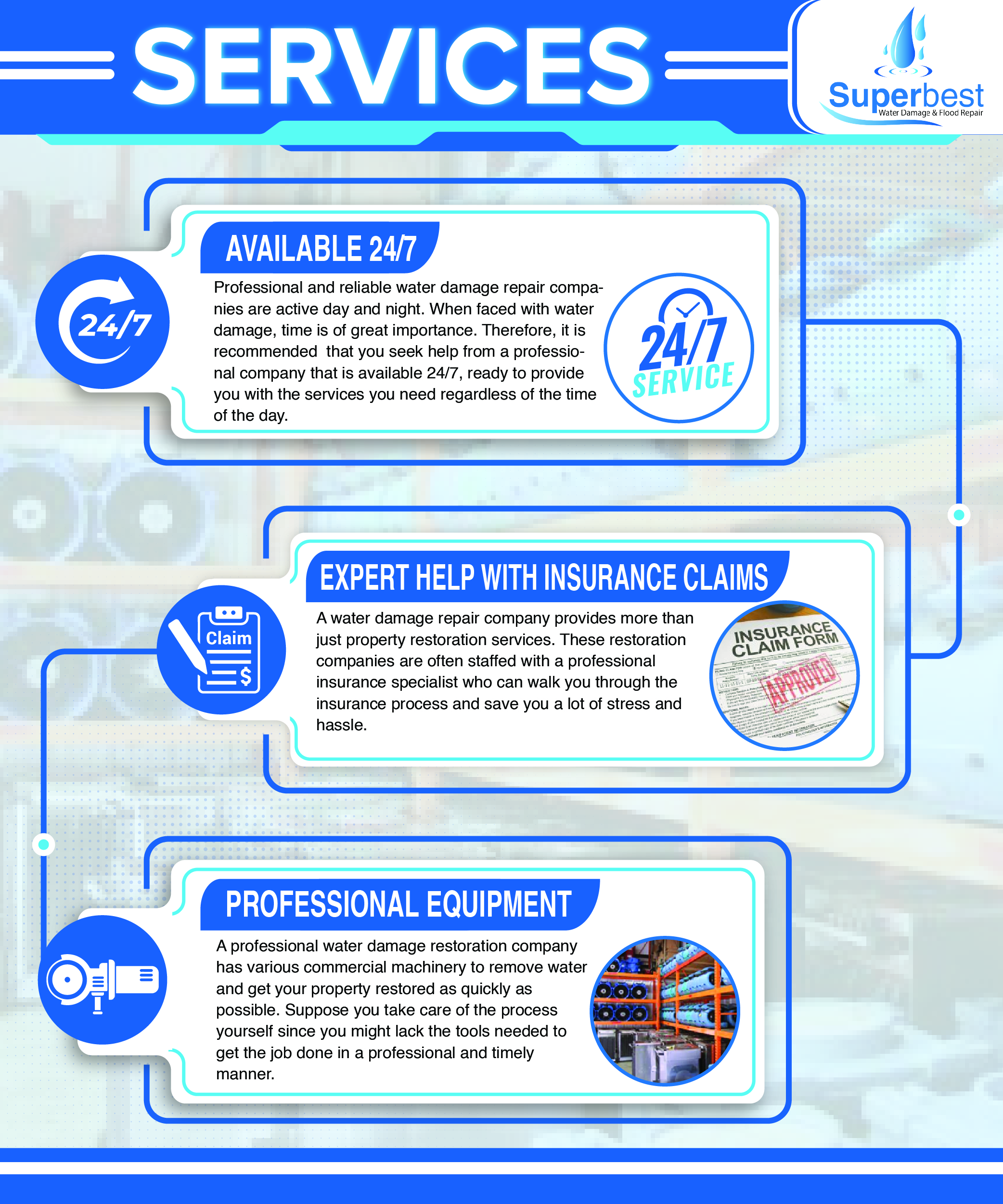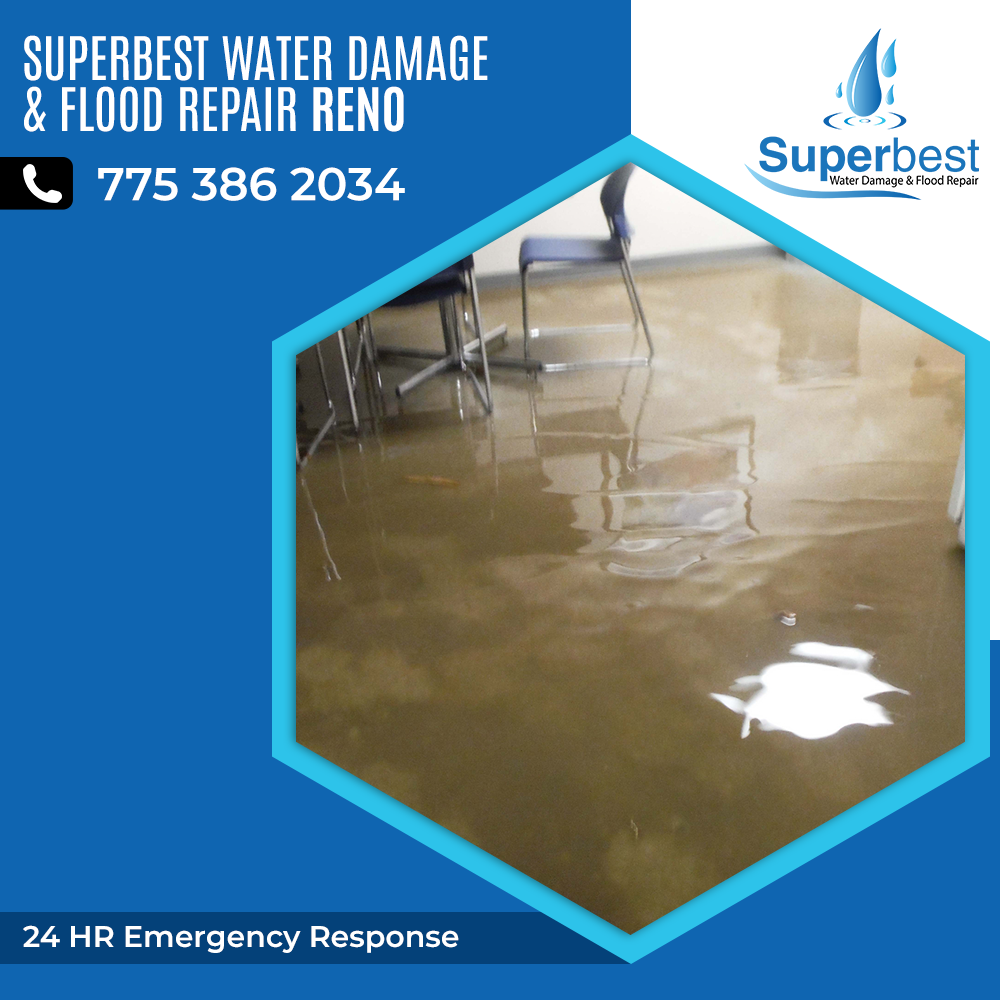Flooding is a severe problem that can cause extensive damage to homes and businesses. In Reno, Nevada, flooding is common due to the city’s proximity to the Truckee River and the Sierra Nevada mountains.
- Home Flood Repair Reno
- House Flood Damage Cleanup Sparks
- Flooded Property Incline Village
- Commercial Flood Cleanup Reno
- Flooded Home Restoration Reno NV
 Types of Flood Damage
Types of Flood Damage
There are three main types of flood damage:
- Clean water damage: This type of damage is caused by water not contaminated with sewage or other pollutants. It is the least harmful type of flood damage, but it can still cause significant property damage.
- Greywater damage: This type of damage is caused by water used for washing, cleaning, or other household activities. It may contain some bacteria and other microorganisms but is not as harmful as blackwater.
- Blackwater damage: This type of damage is caused by water contaminated with sewage or other pollutants. It is the most harmful type of flood damage and can cause serious health problems
Signs of Flood Damage
If your home or business has been flooded, there are a few signs that you should look for:
- Standing water: This is the most obvious sign of flood damage. If you see standing water in your home or business, it is essential to act quickly to remove it.
- Wet or damp areas: Even if you do not see standing water, you may still have flood damage. Wet or damp areas can indicate water seeping into your walls, floors, or furniture.
- Musty or moldy smell: If you smell a musty or moldy smell, it is a sign that flood damage has occurred. Mold can grow quickly in damp conditions, and it can cause serious health problems.
- Damaged furniture or belongings: If your furniture or belongings have been damaged by water, it is important to dispose of them properly. Floodwater can contain harmful bacteria and other pollutants, and it is not safe to use furniture or belongings that have been contaminated.

What to Do After a Flood
If your home or business has been flooded, it is crucial to take action immediately. The following steps will help you to minimize the damage and protect your health:
- Turn off the power and water. This will help to prevent further damage and electrical shock.
- Evacuate the area if necessary. If the flooding is severe, you may need to evacuate your home or business.
- Remove standing water. If there is standing water, you must remove it as soon as possible. This can be done with a sump pump or by hand.
- Dry the affected areas. Once the standing water has been removed, you will need to dry the affected areas. This can be done with fans, dehumidifiers, or by opening windows and doors.
- Dispose of damaged items. Any furniture or belongings damaged by water should be disposed of properly.
- Call a professional water damage restoration company. A professional water damage restoration company will help you assess the damage and restore your home or business to its pre-flood condition.
Preventing Flood Damage
The best way to prevent flood damage is to protect your home or business from flooding. The following tips can help:
- Install a sump pump. A sump pump can help to remove water from your basement or crawl space in the event of a flood.
- Install flood vents. Flood vents can help to prevent water from backing up into your home or business from the sewer system.
- Raise your appliances. Appliances that are placed on the floor are more likely to be damaged by flooding. Raising them up on blocks or platforms can help to protect them.
- Have a disaster plan. In the event of a flood, it is essential to have a plan in place. This plan should include steps on how to evacuate your home or business, as well as how to restore it to its pre-flood condition.


